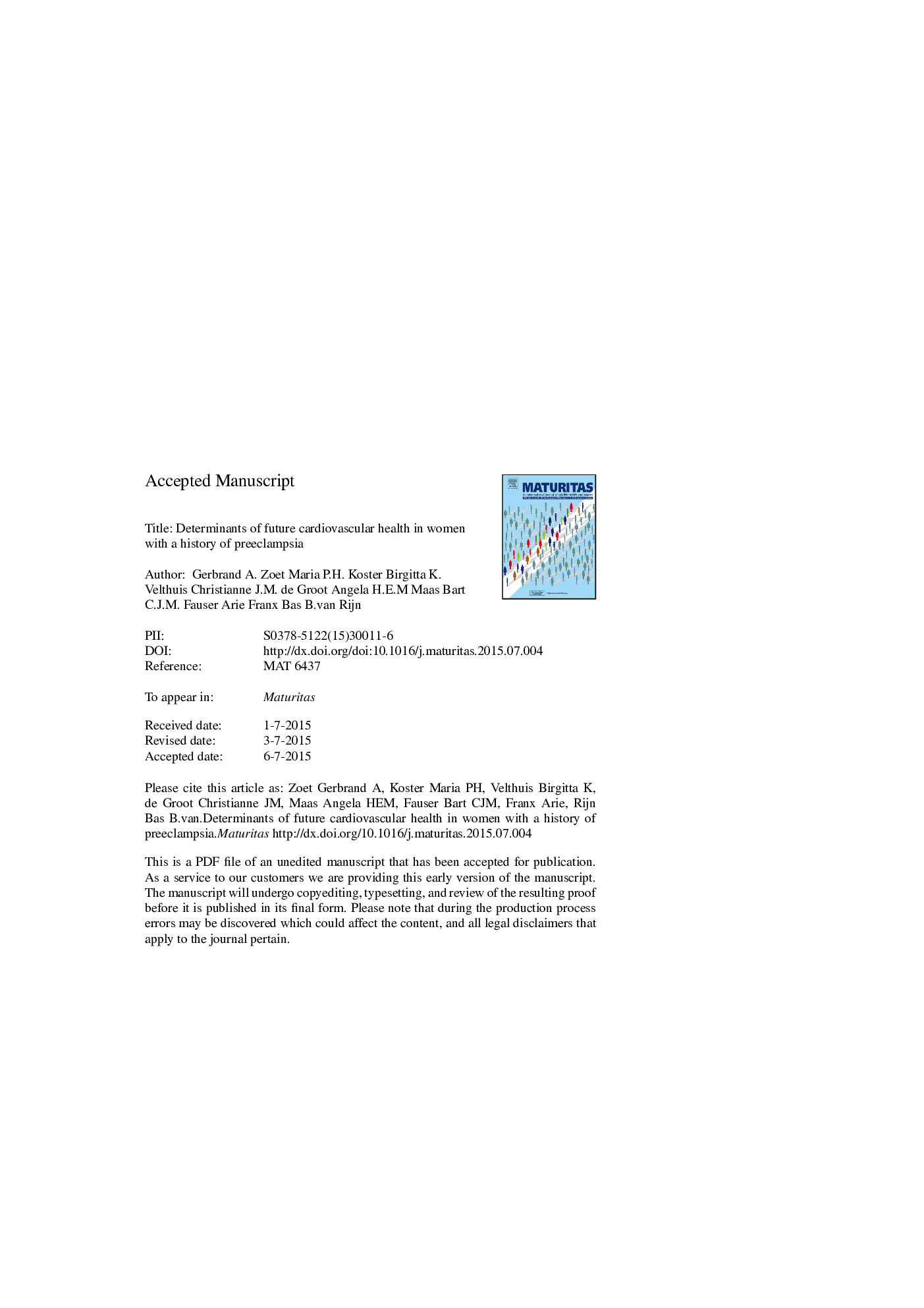| Article ID | Journal | Published Year | Pages | File Type |
|---|---|---|---|---|
| 10743224 | Maturitas | 2015 | 34 Pages |
Abstract
Furthermore, we explore how female-specific risk factors may have additional value in cardiovascular screening, in particular in relatively young women, although their implementation in clinical practice is challenged by inconsistent results and lack of long-term outcome data. Non-invasive imaging techniques, e.g., coronary artery intima-media thickness (CIMT), can be helpful to detect subclinical atherosclerotic disease, and coronary artery calcium scoring (CACS) has shown to be effective in early detection of cardiovascular damage. However, while more short-term and long-term follow-up studies are becoming available, few studies have investigated women with a history of preeclampsia in the fourth and fifth decade of life, when early signs of premature CVD are most likely to become apparent. Further studies are needed to inform new and improved clinical practice guidelines, and provide long-term strategies to effectively prevent CVD, specifically targeted at women with a history of preeclampsia. Additionally, evaluation of feasibility, cost-effectiveness, and implementation of CVD screening and prevention initiatives targeted at former preeclampsia patients are needed.
Related Topics
Life Sciences
Biochemistry, Genetics and Molecular Biology
Ageing
Authors
Gerbrand A. Zoet, Maria P.H. Koster, Birgitta K. Velthuis, Christianne J.M. de Groot, Angela H.E.M. Maas, Bart C.J.M. Fauser, Arie Franx, Bas B. van Rijn,
